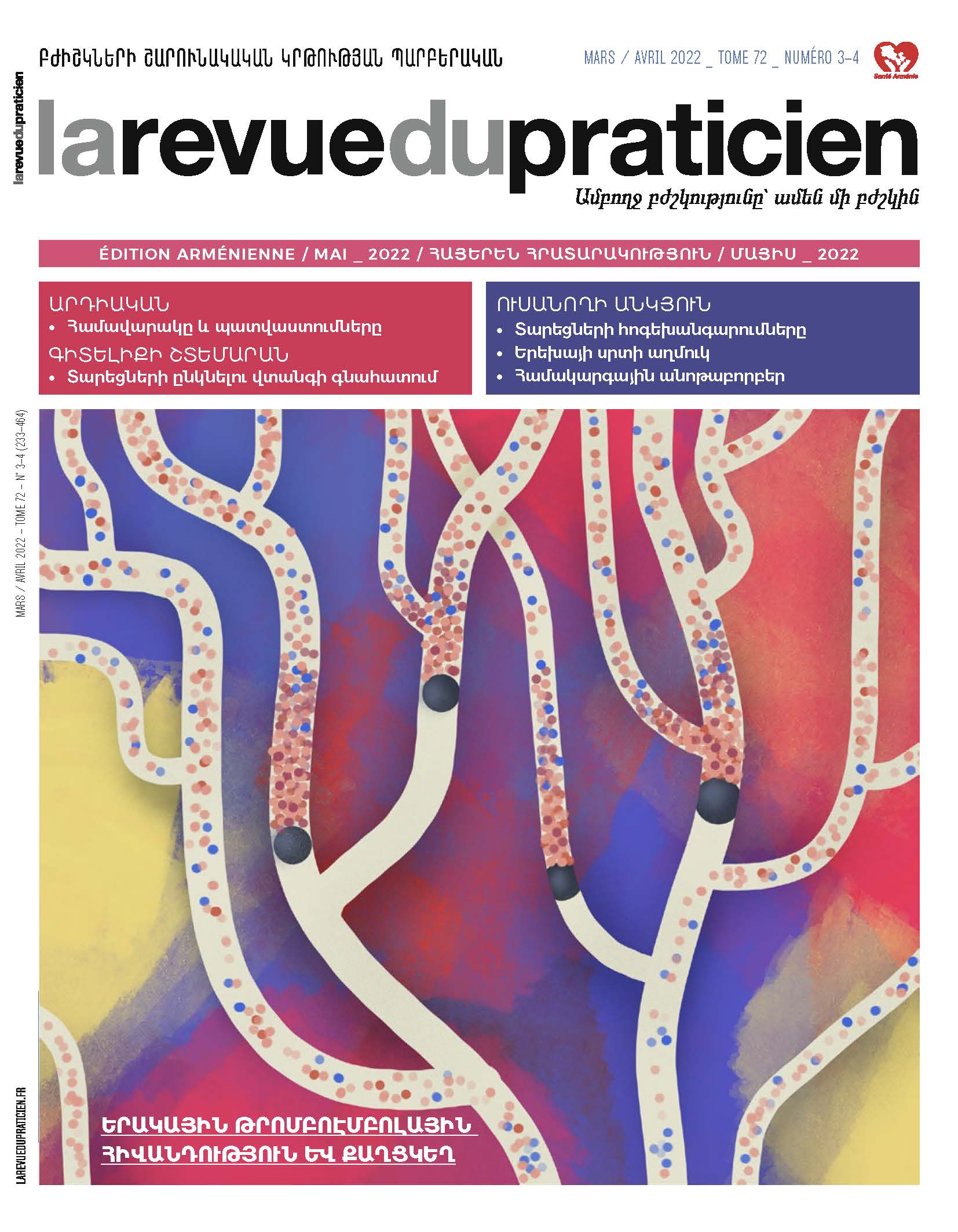Քաղցկեղի հետ համակցված երակային թրոմբոէմբոլային հիվանդության բուժումը 21
Olivier Sanchez.Ամփոփագիր
Քաղցկեղի հետ համակցված երակային թրոմբոէմբոլային հիվանդության բուժումը դժվարանում է թրոմբոէմբոլիայի ախտակրկնության և արյունահոսության մեծ վտանգի պատճառով։ Առաջին վեց ամիսների ընթացքում ցածր մոլեկուլային զանգվածով հեպարինները (ՑՄԶՀ) ավելի արդյունավետ են, քան վիտամին K-ի ներհակորդները, և չեն ավելացնում արյունահոսությունը։ Դալտեպարինի և ուղղակի ազդեցության հաբային հակամակարդիչների (ՈւԱՀՀ) արդյունավետությունն առնվազն համեմատելի է։ ՈւԱՀՀ-ի հետ կապված արյունահոսության վտանգը համեմատելի կամ մեծ է, քան դալտեպարինինը, սակայն, ըստ երևույթին, կախված է ուսումնասիրվող ՈՒԱՀՀ-ից և, դրանցից որոշների համար, ուռուցքային հիվանդության տեղակայումից։ Վեցերորդ ամսից հետո, եթե քաղցկեղը դեռևս ակտիվ է, հակամակարդիչներով ապաքինող բուժումը շարունակվում է՝ ցածր մոլեկուլային զանգվածով հեպարինով, եթե այն դյուրատար է ու արդյունավետ, կամ ուղղակի ազդեցության հաբային հակամակարդիչի լրիվ չափաբաժնով։ Դեռևս իրականացվում է ռանդոմացված հետազոտություն, որը համեմատում է ապիքսաբանի կես և լրիվ չափաբաժինների արդյունավետությունն ու տանելիությունը։
